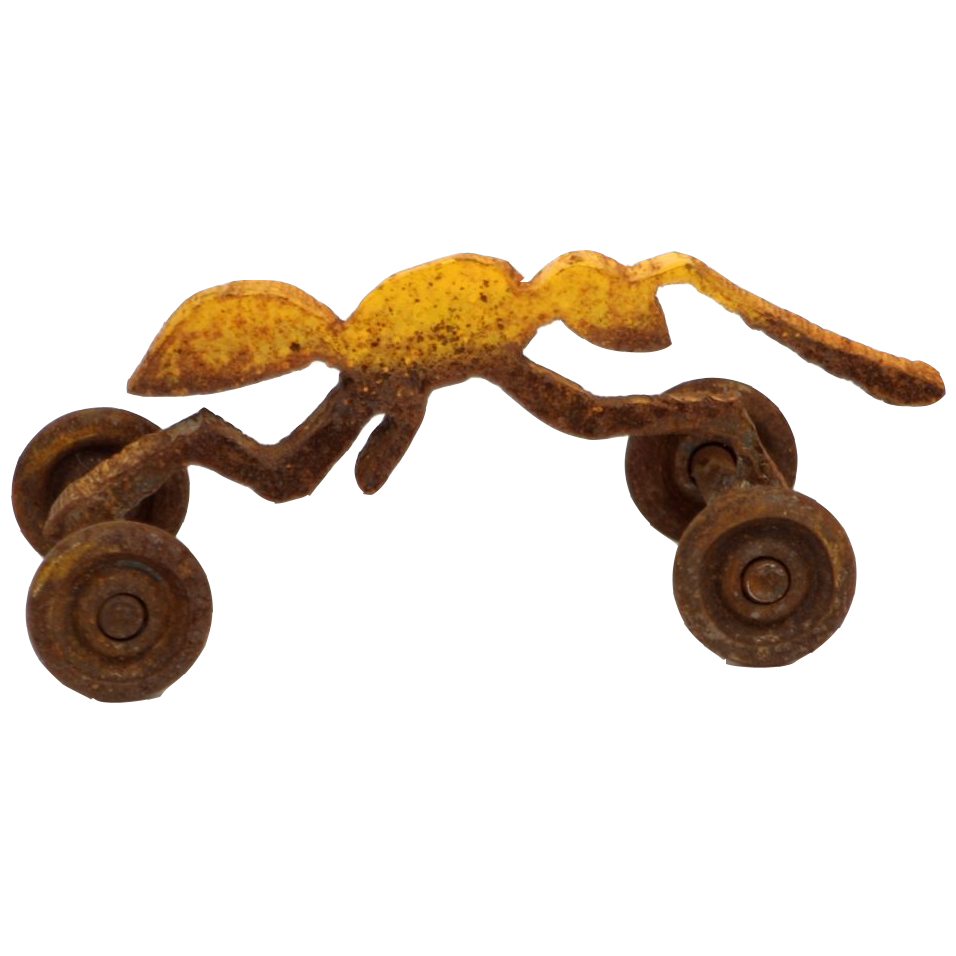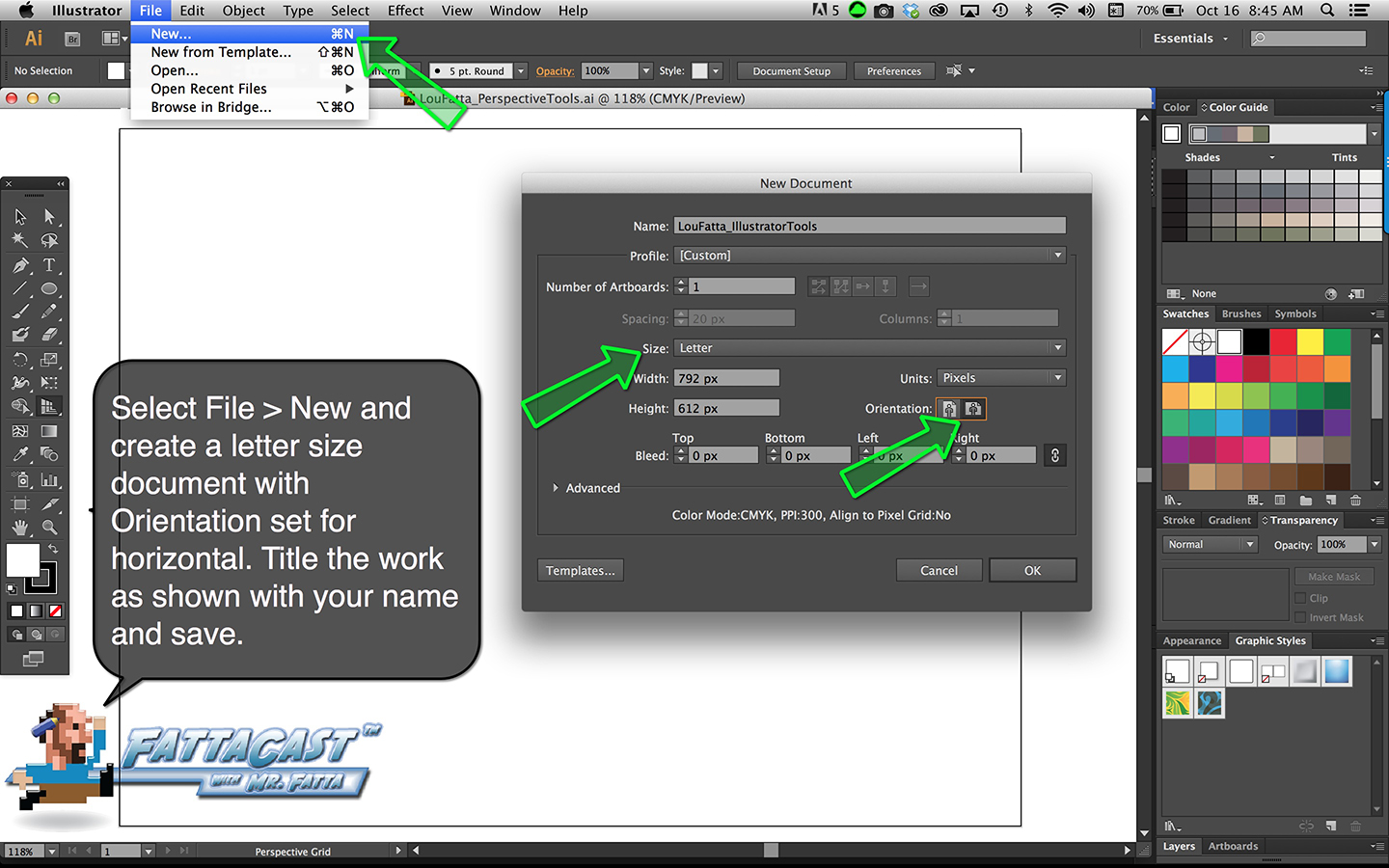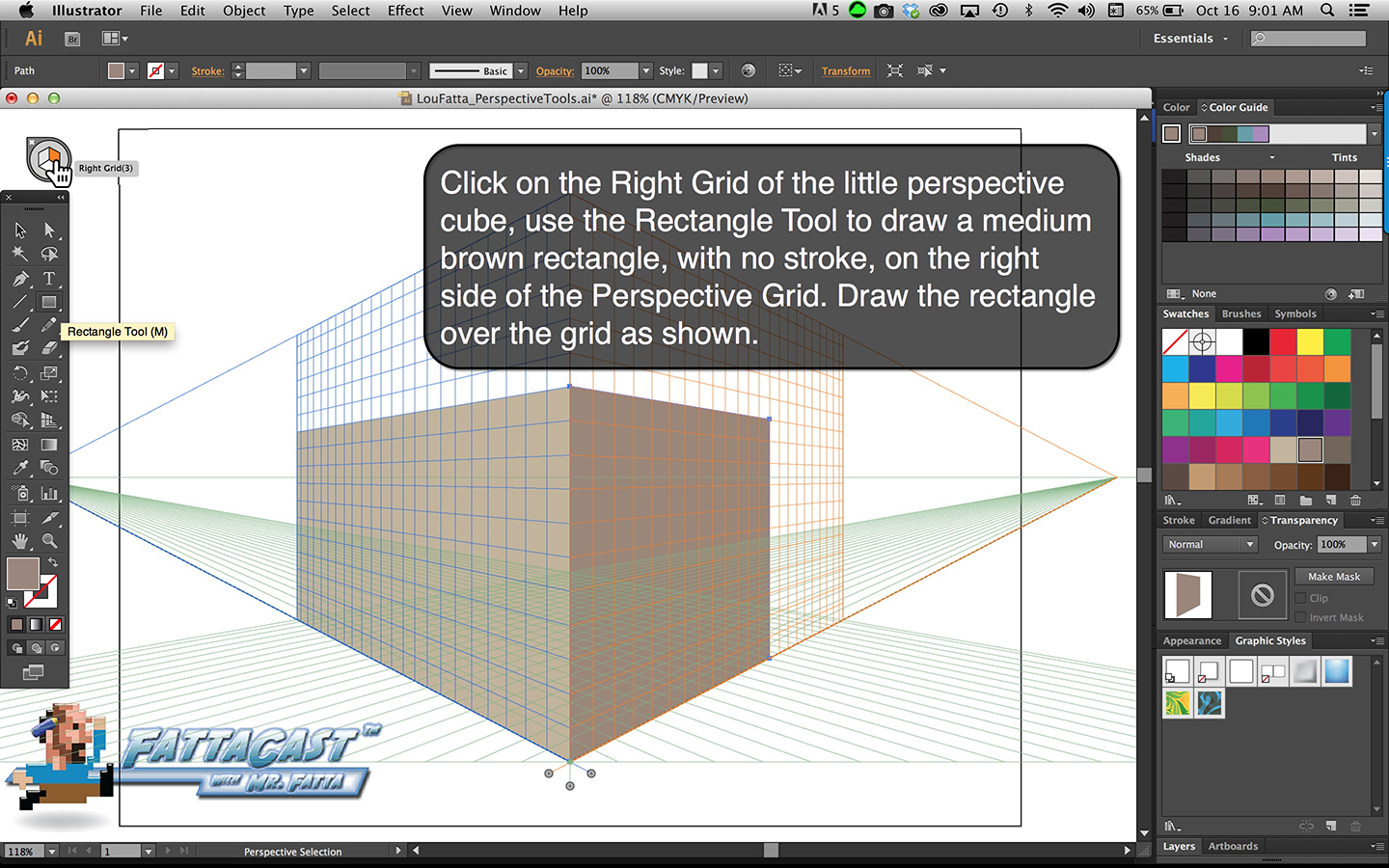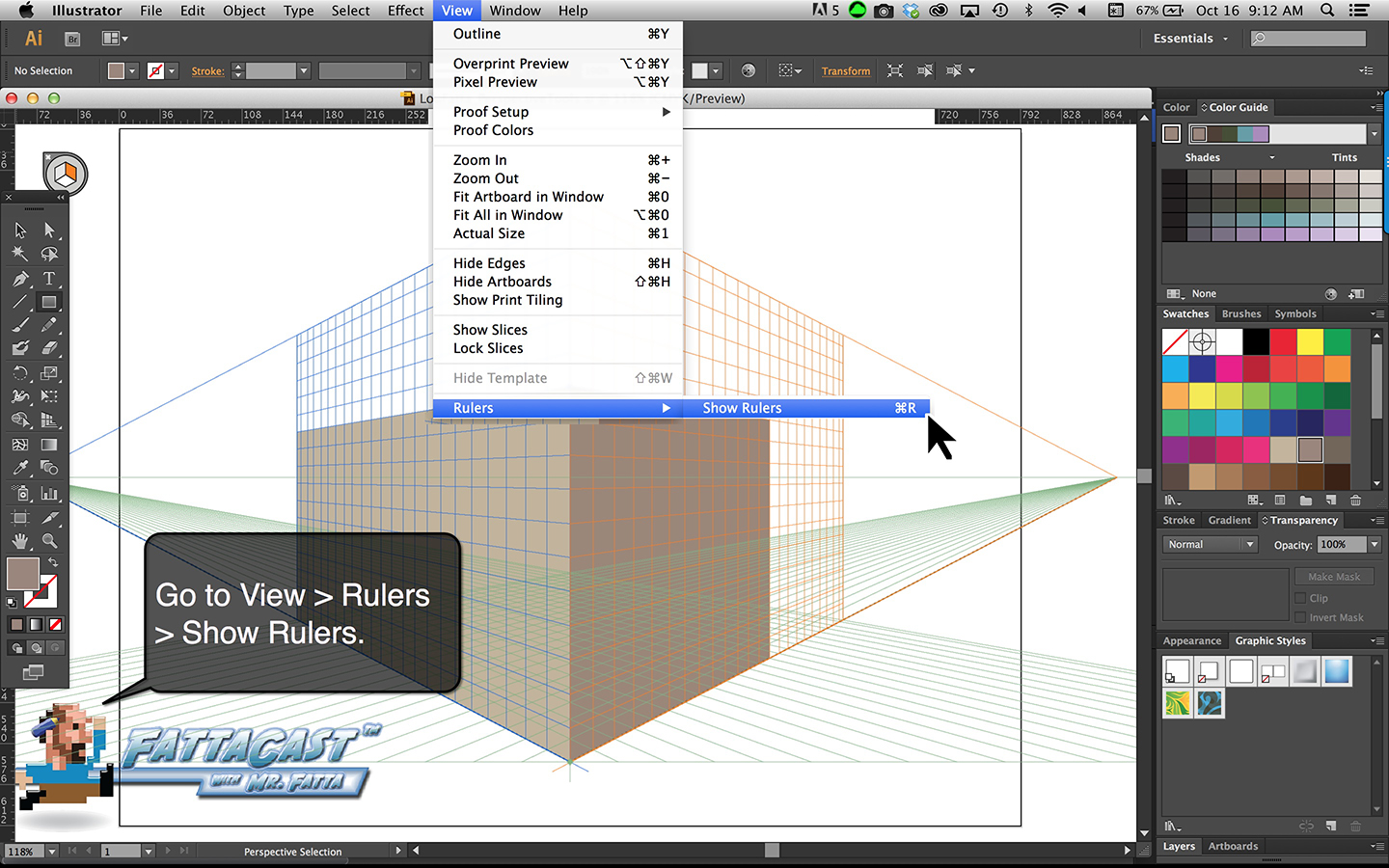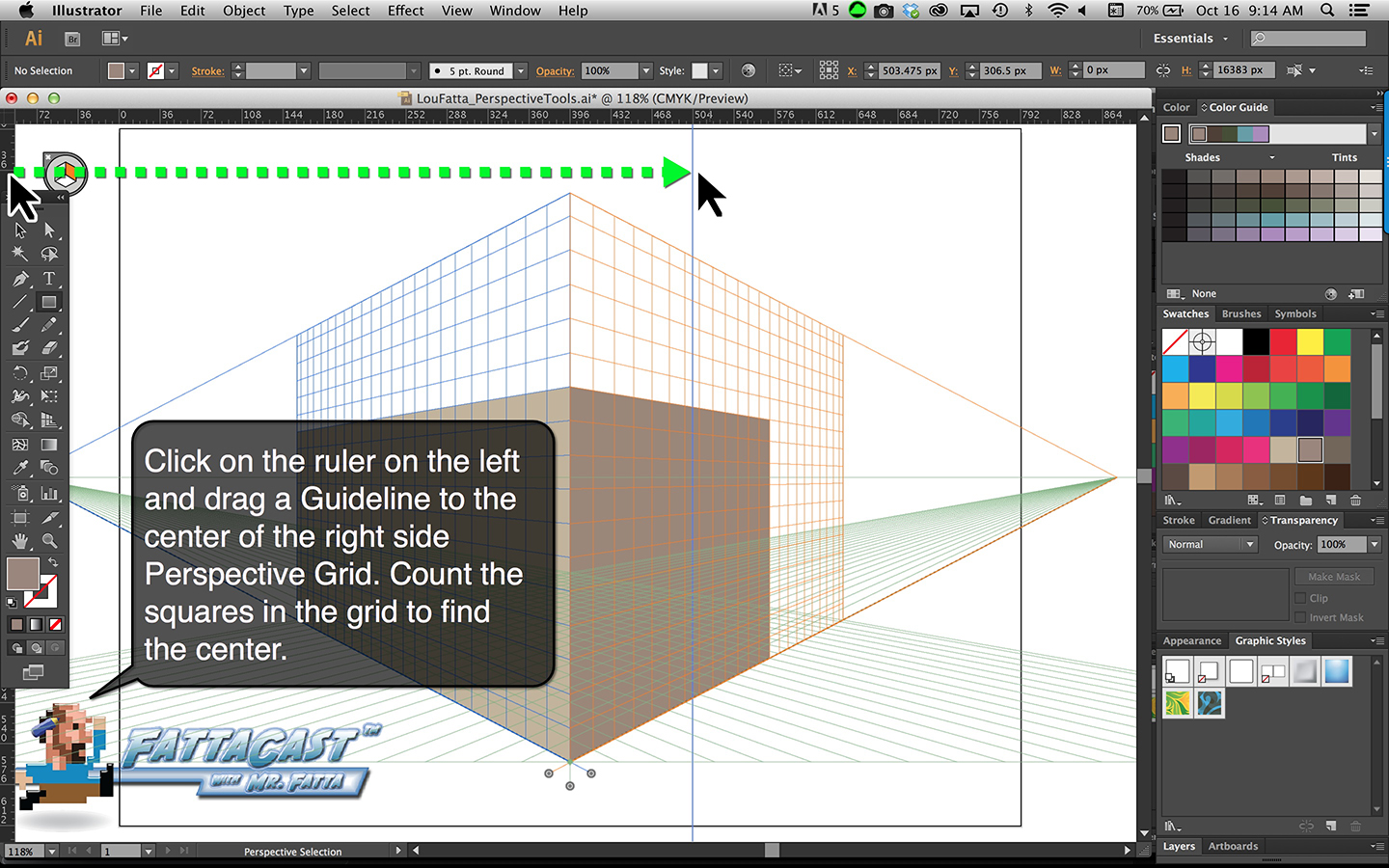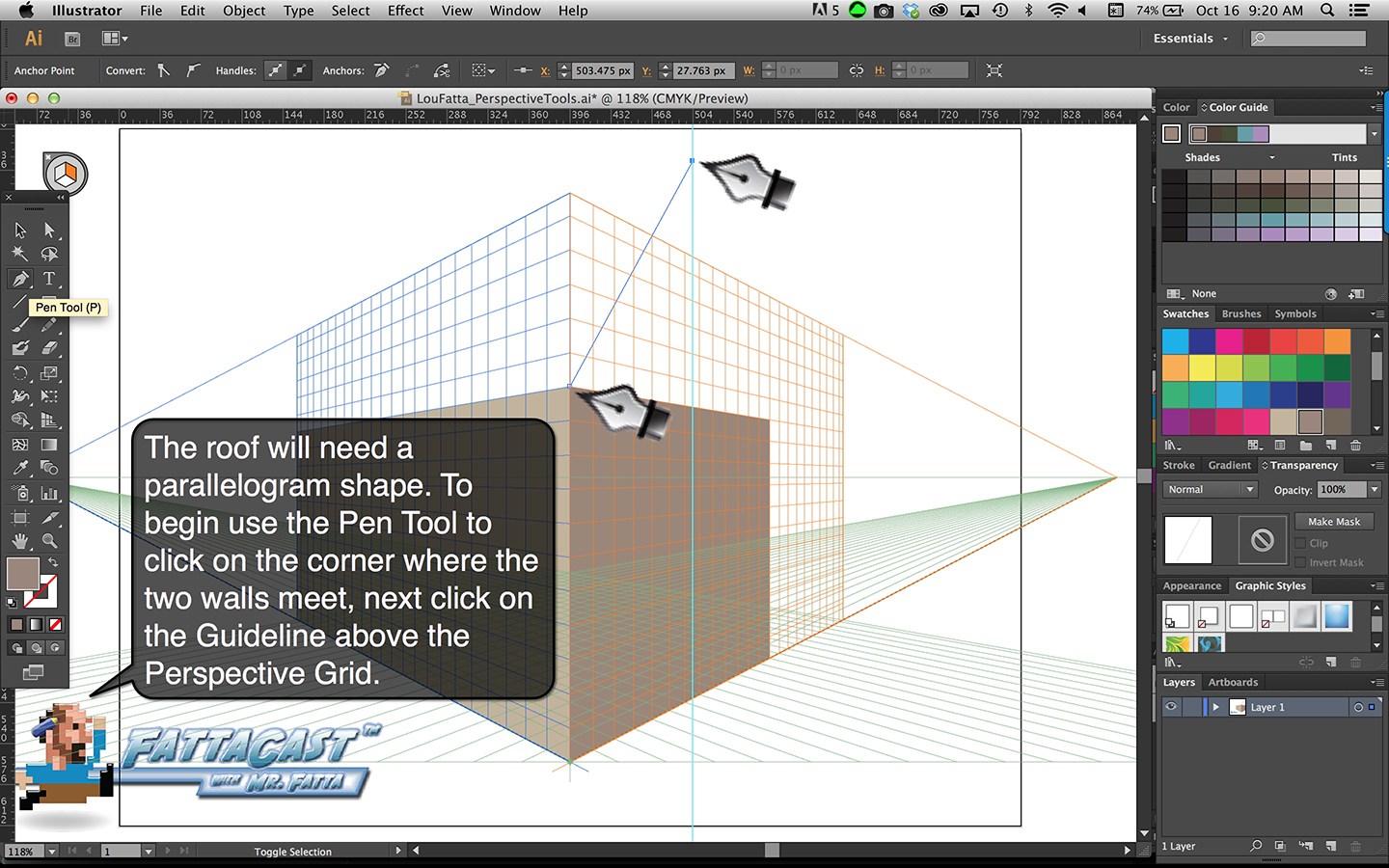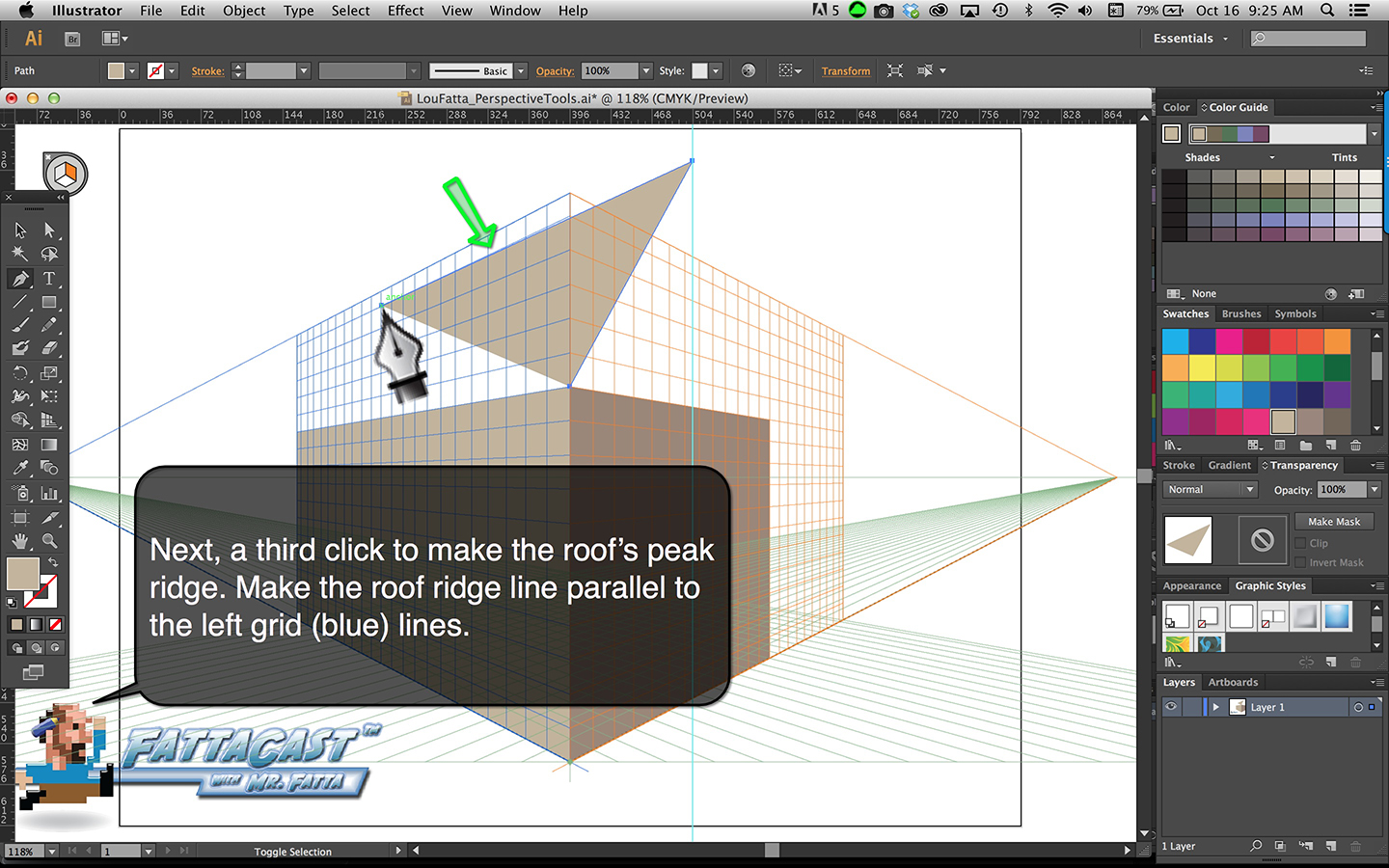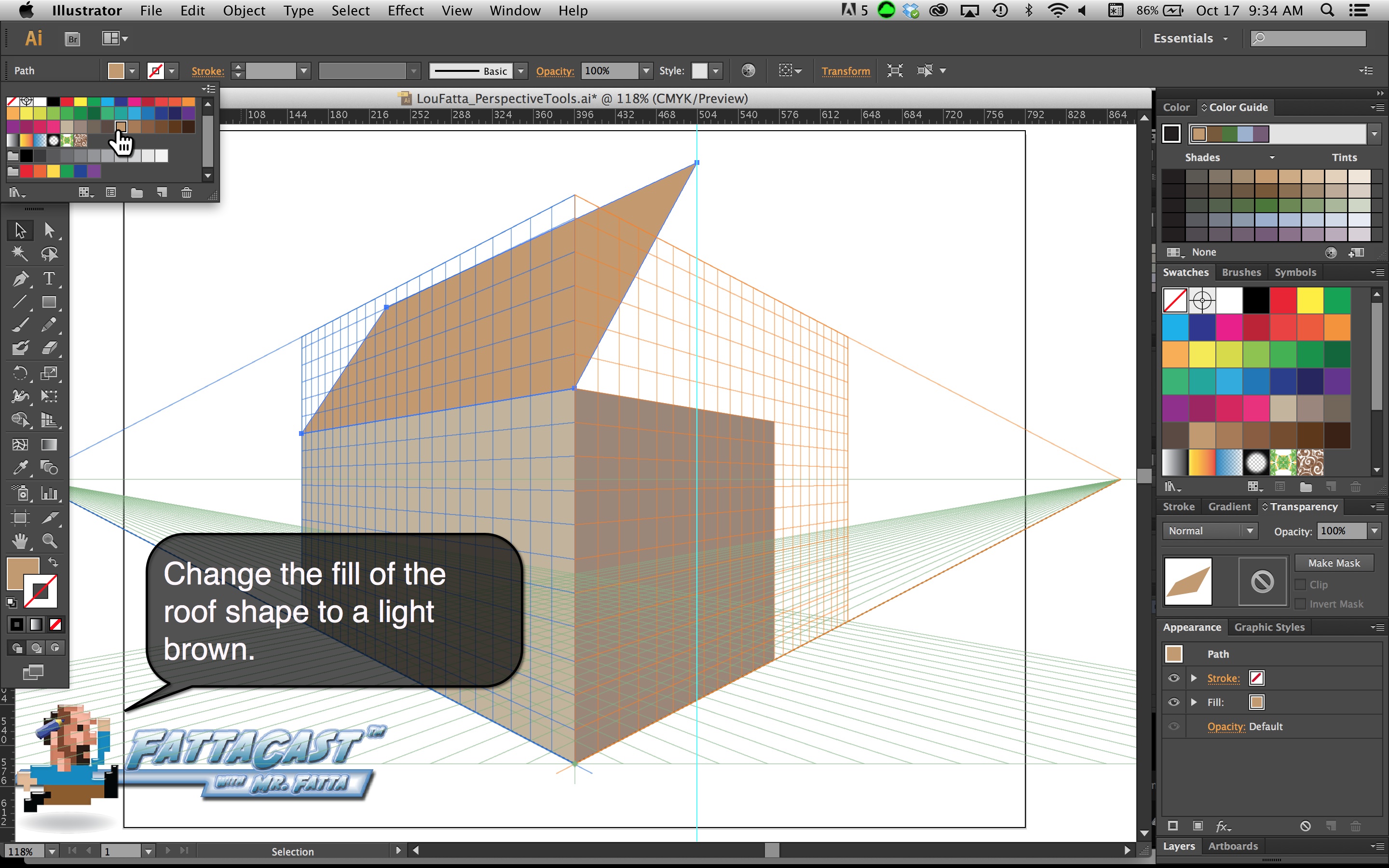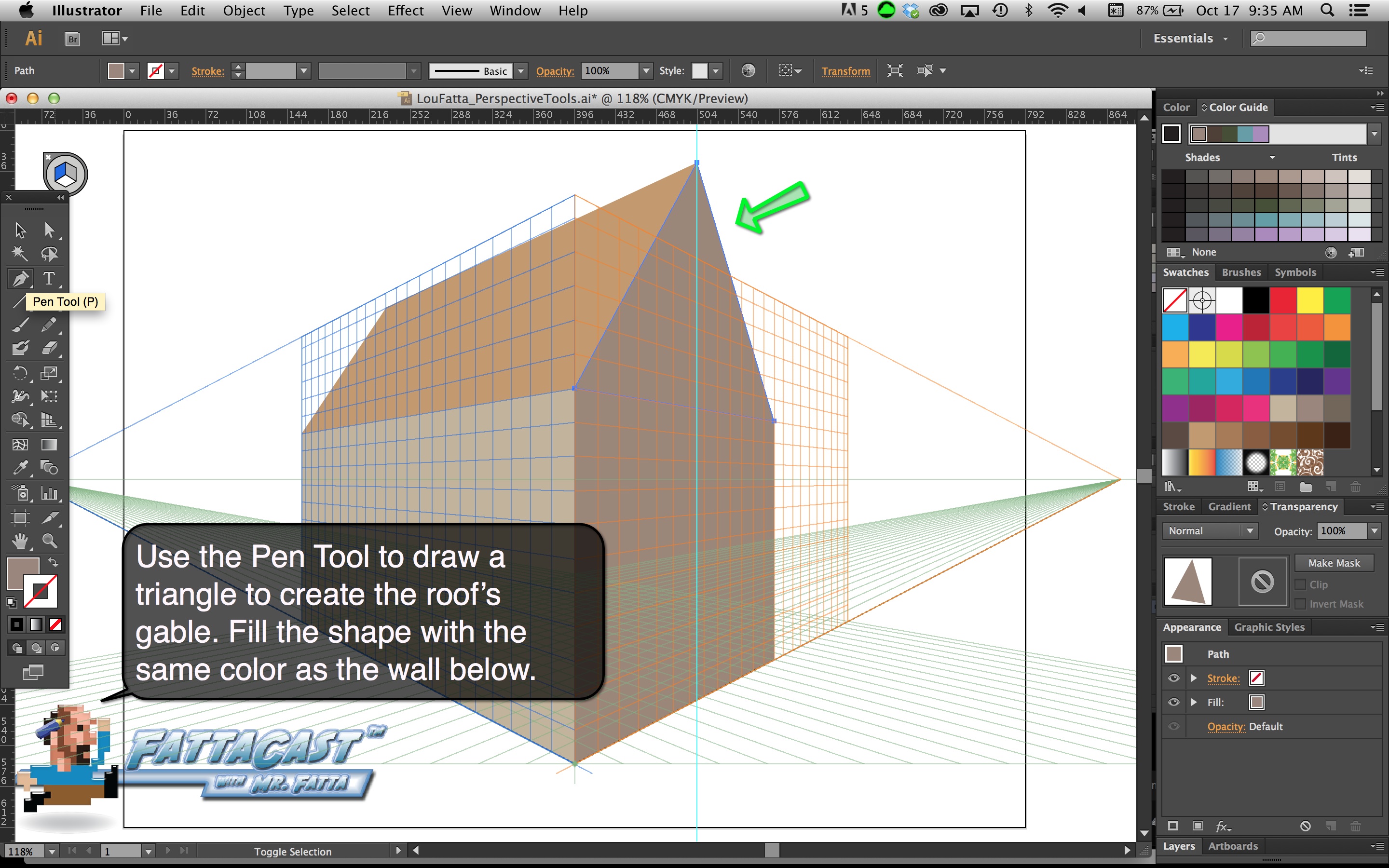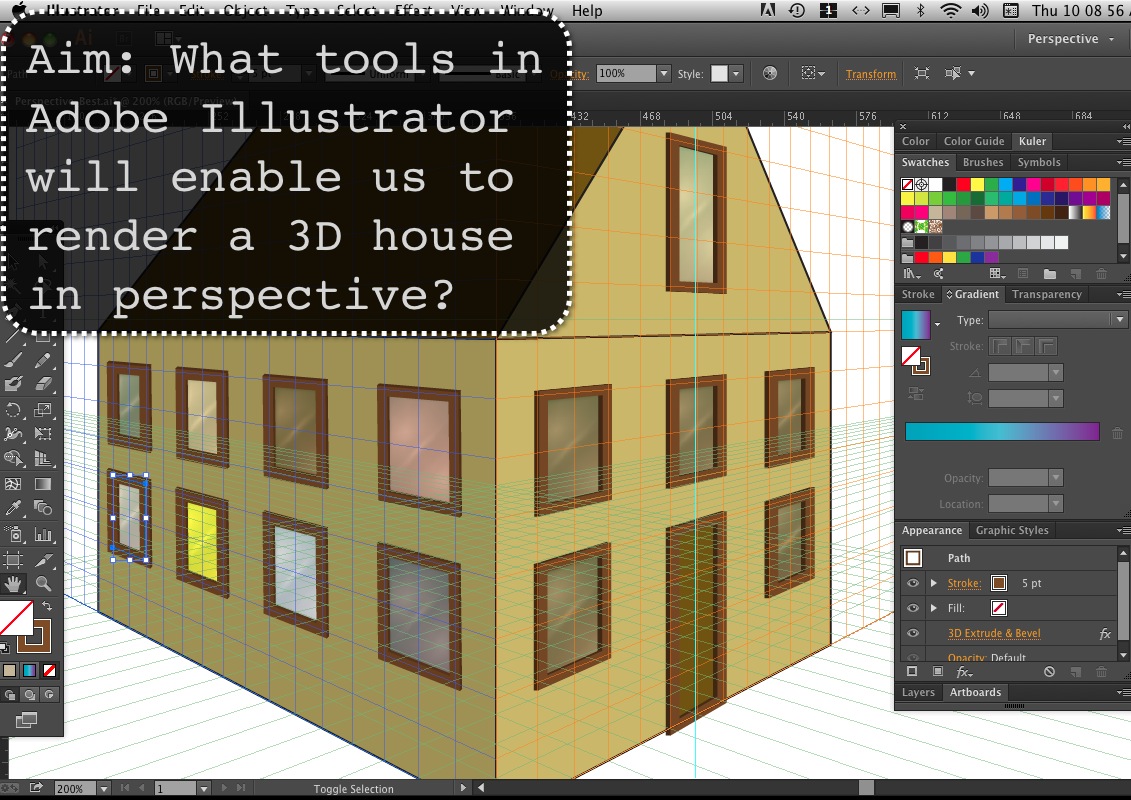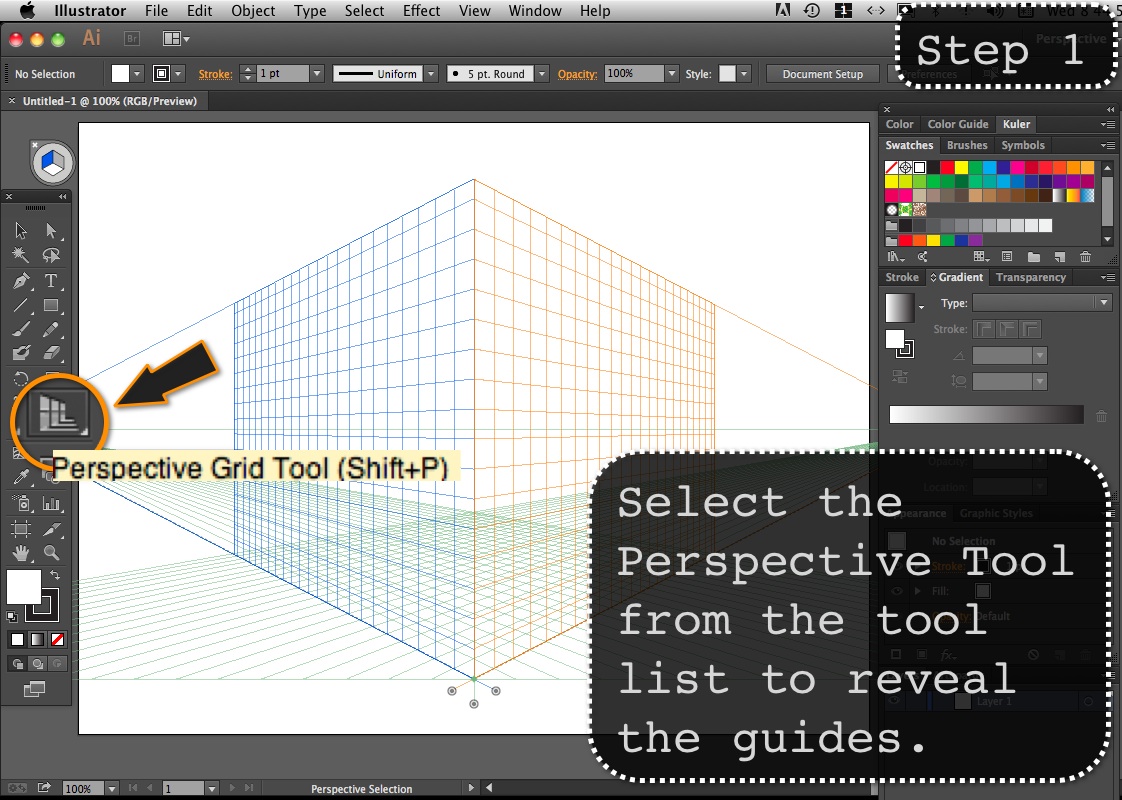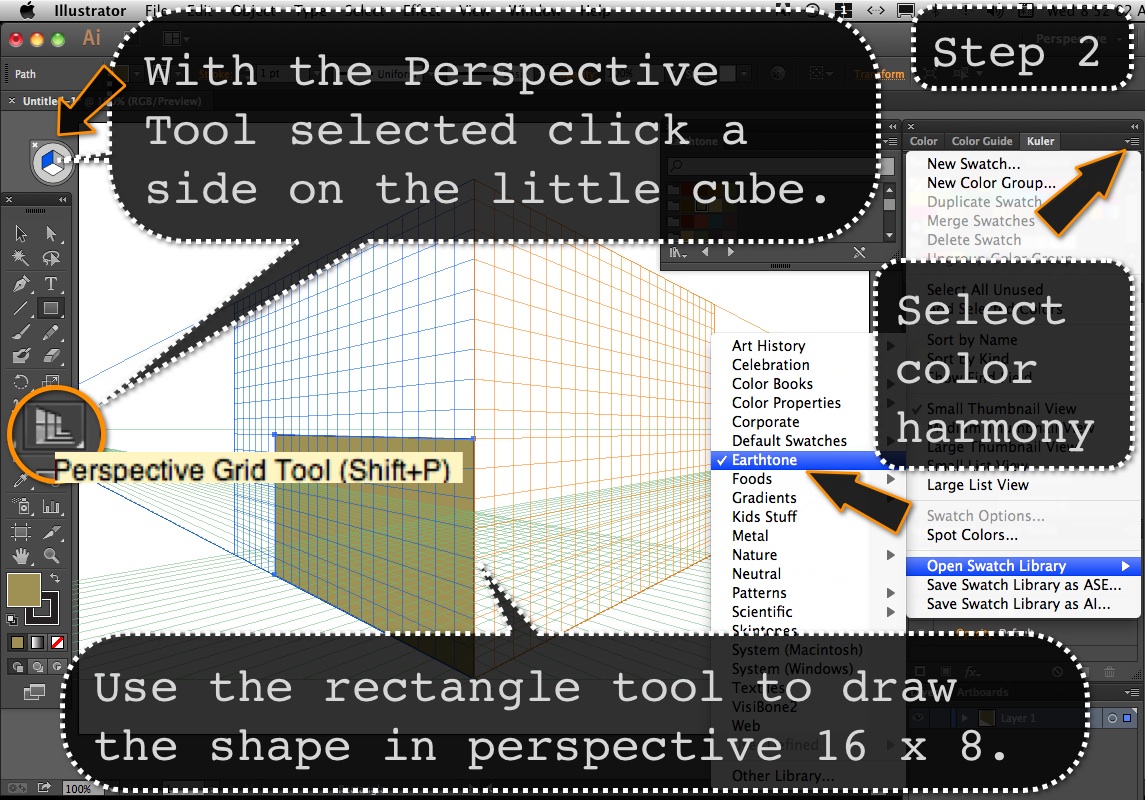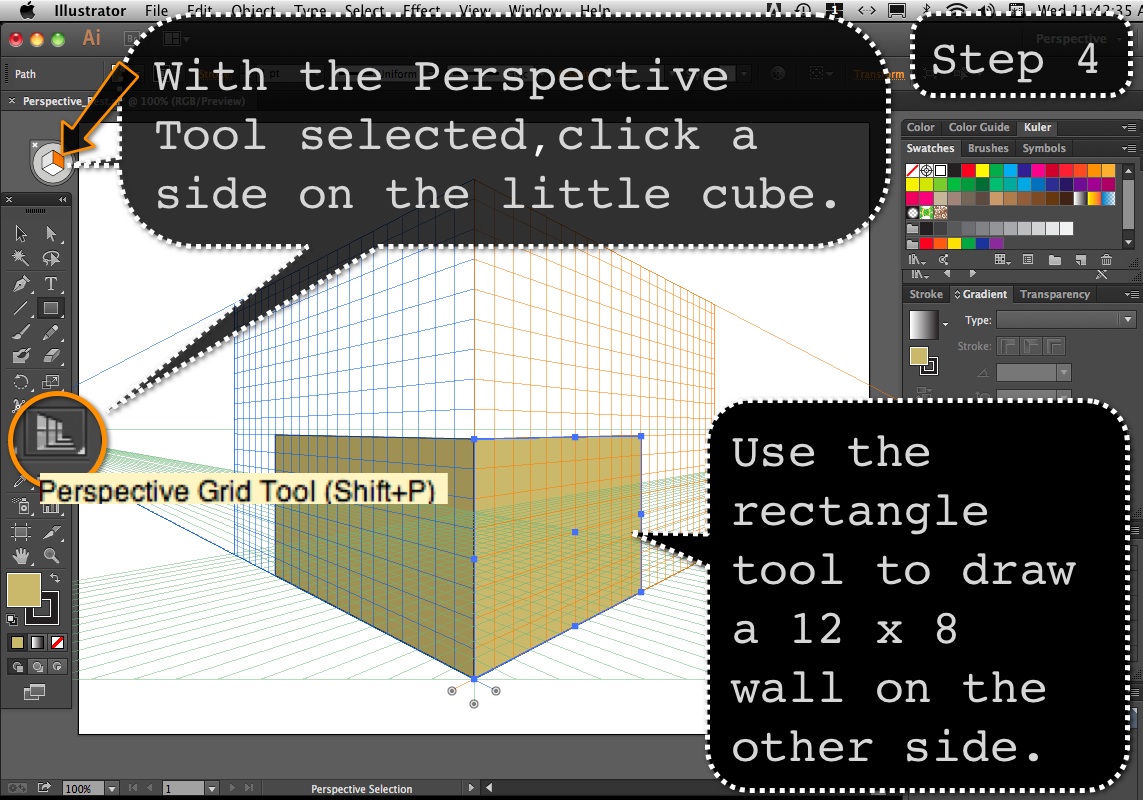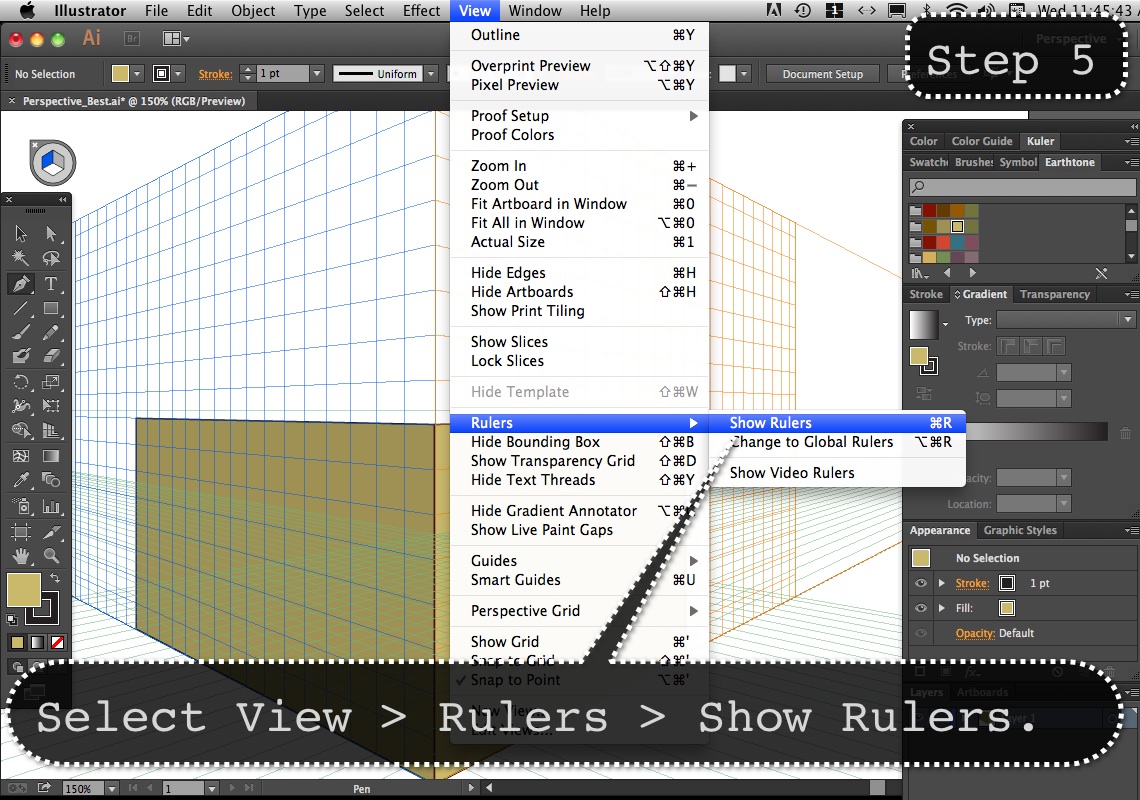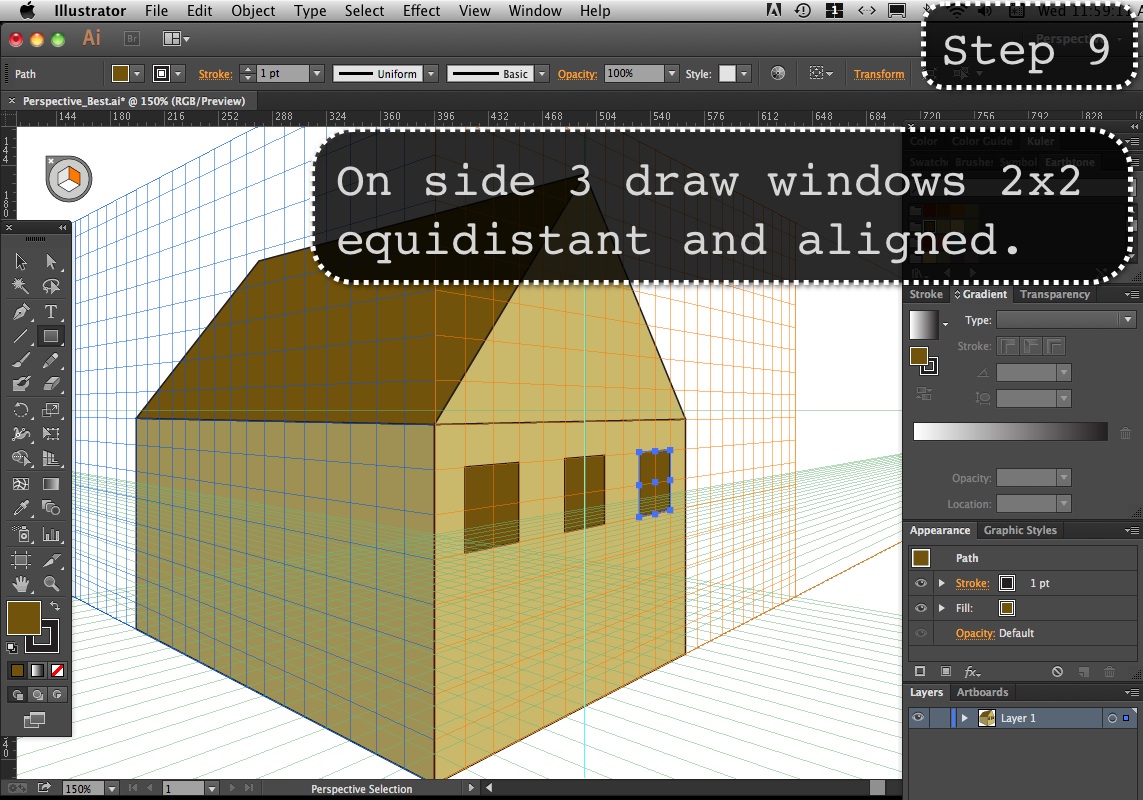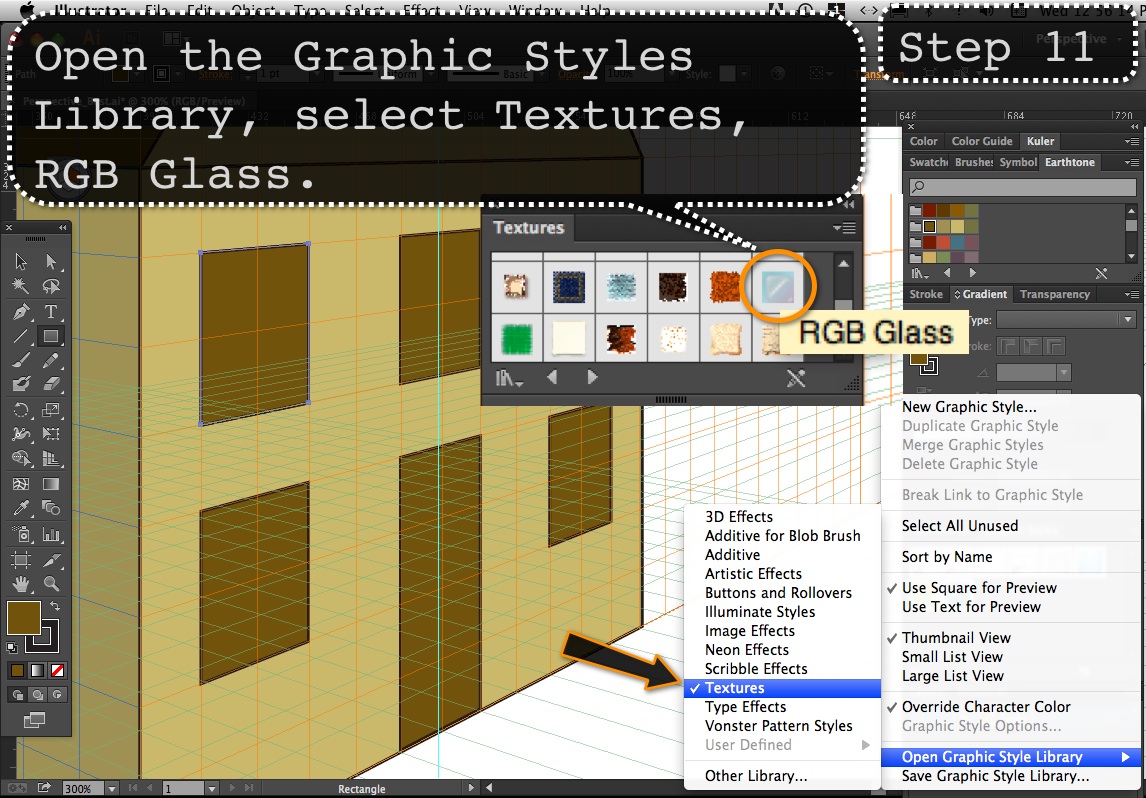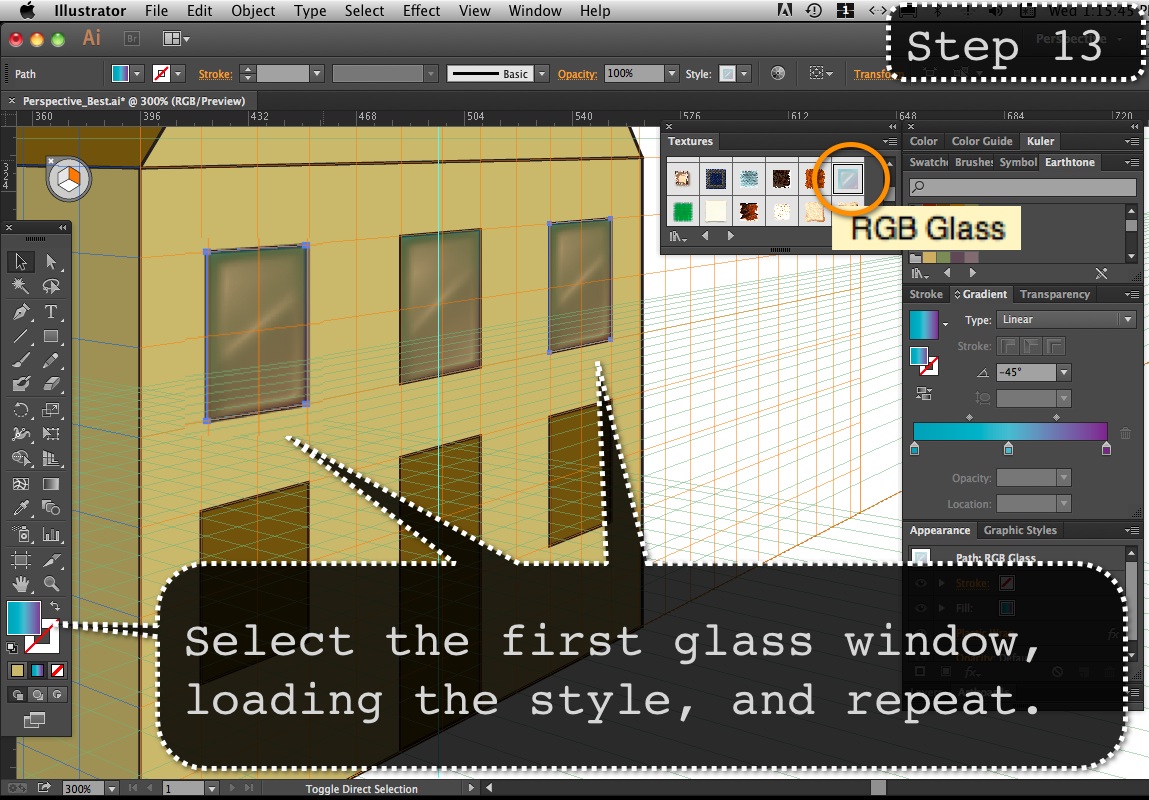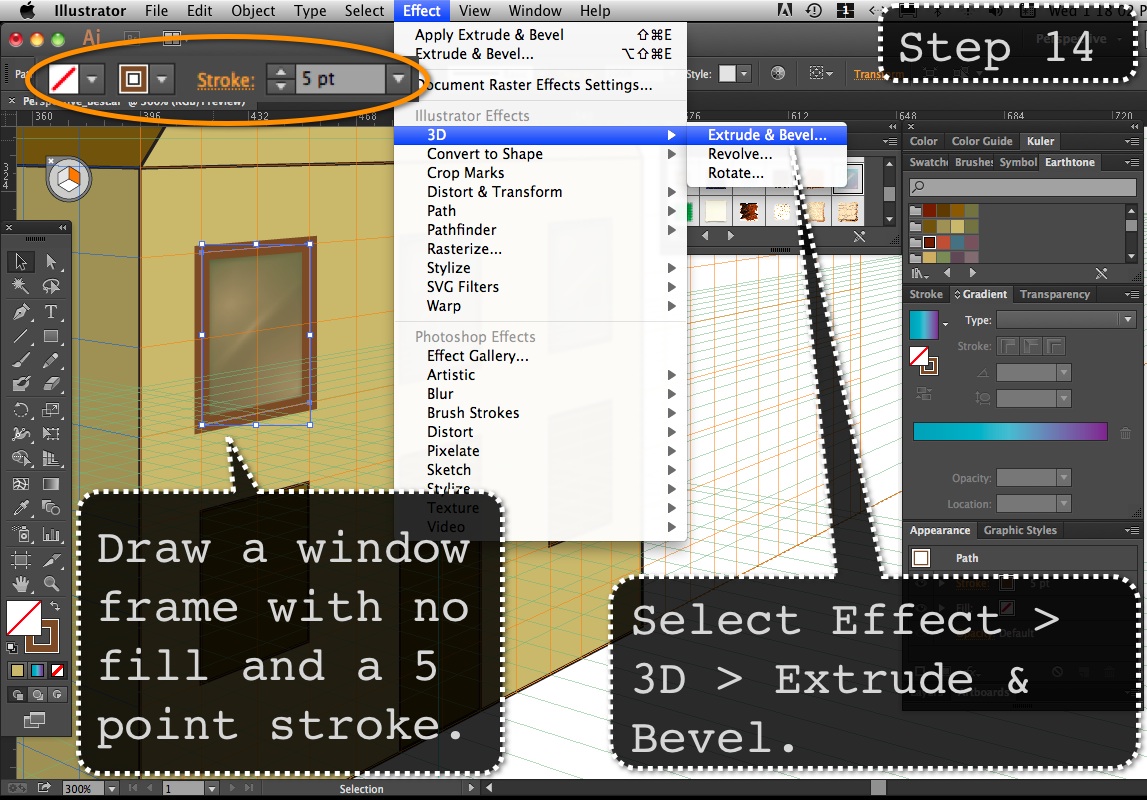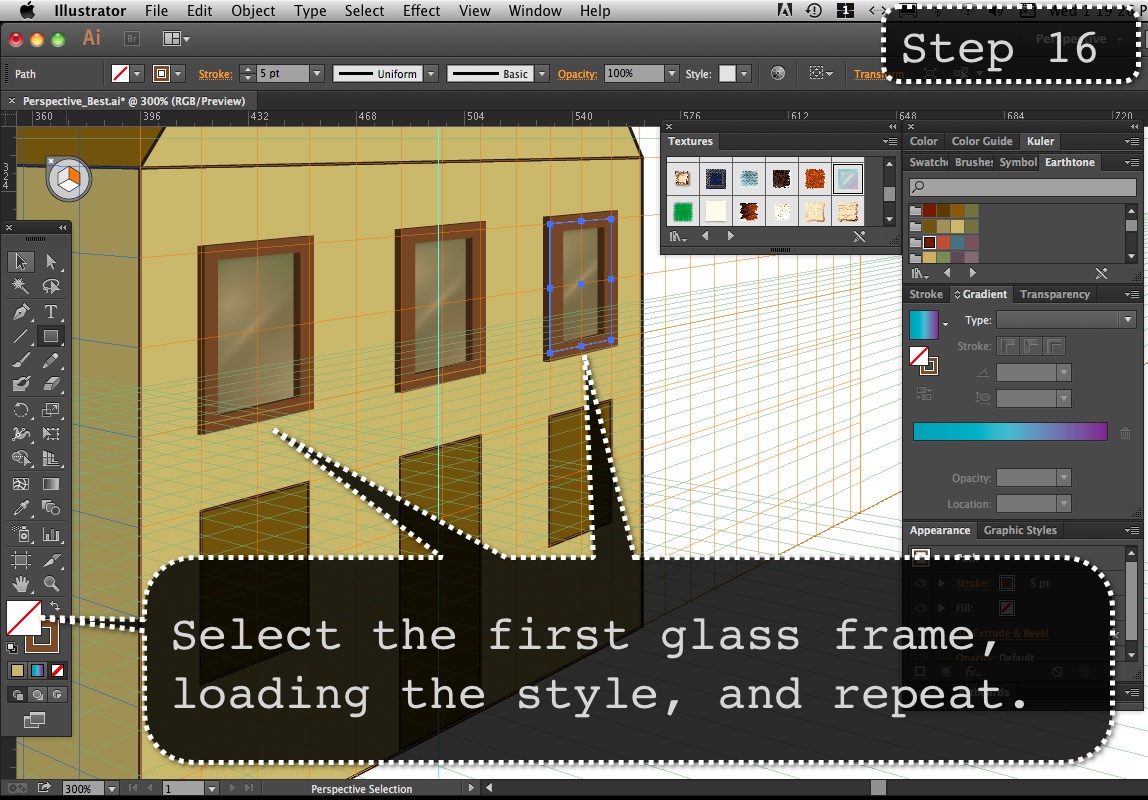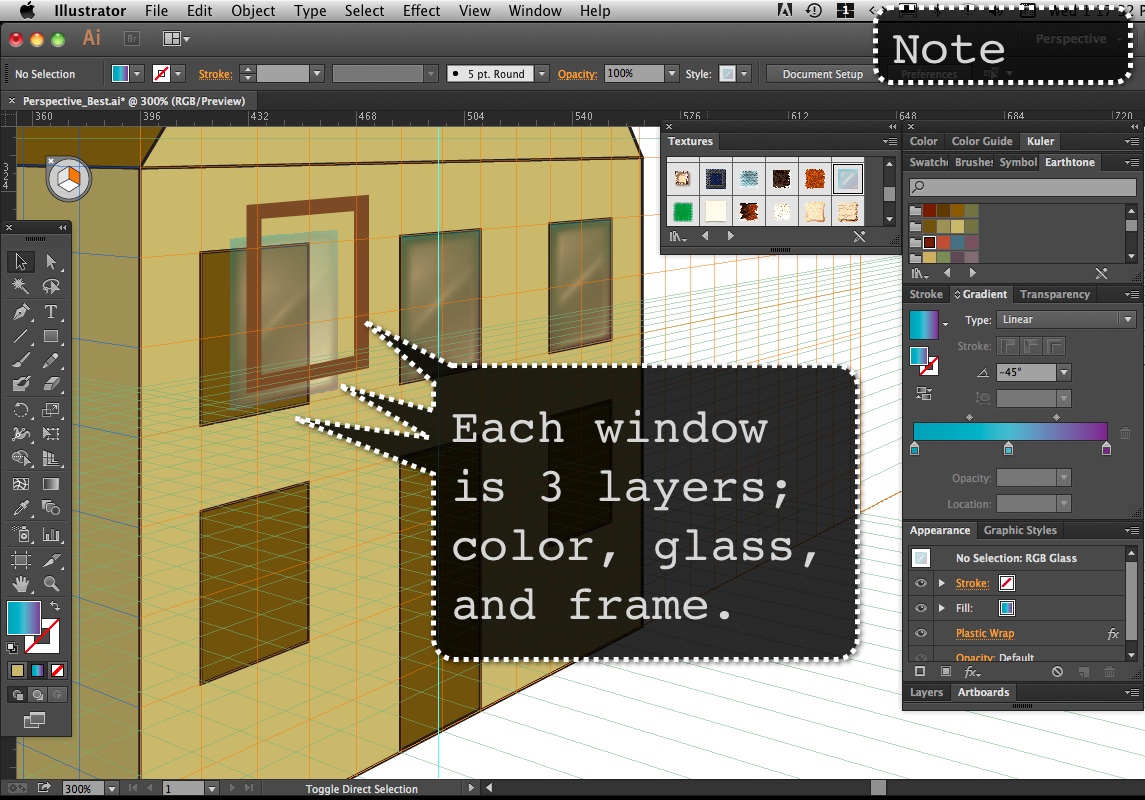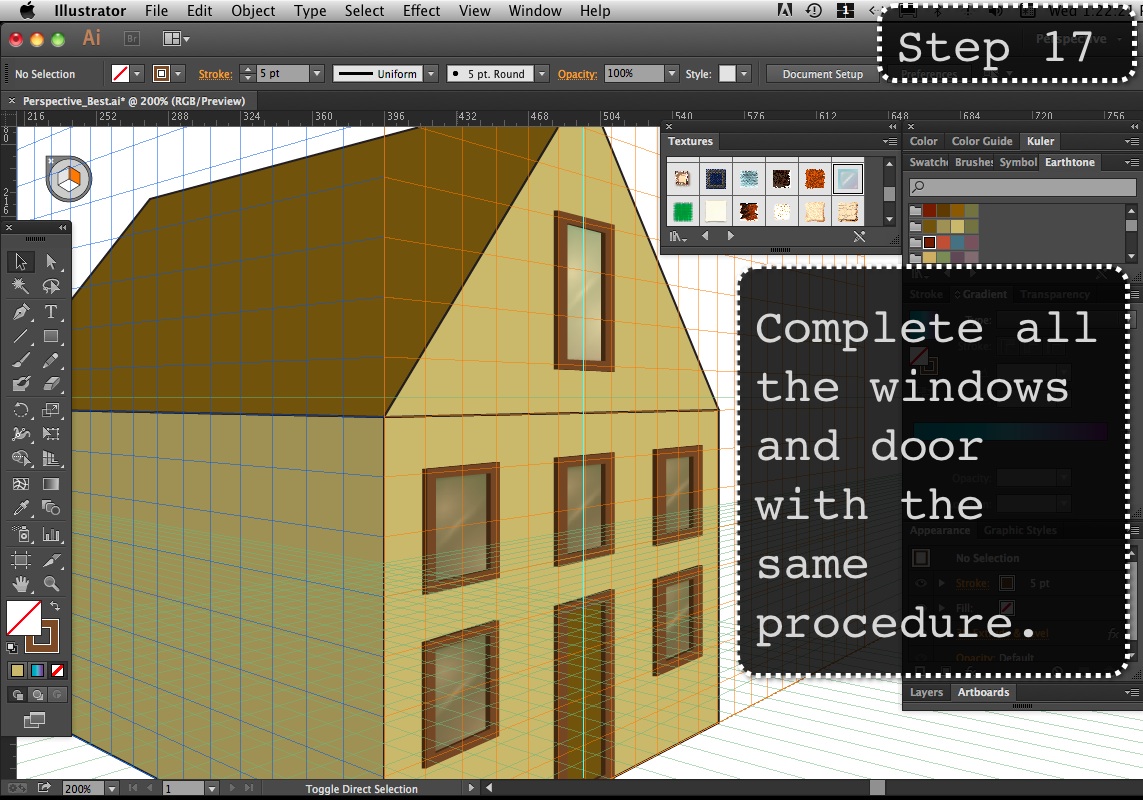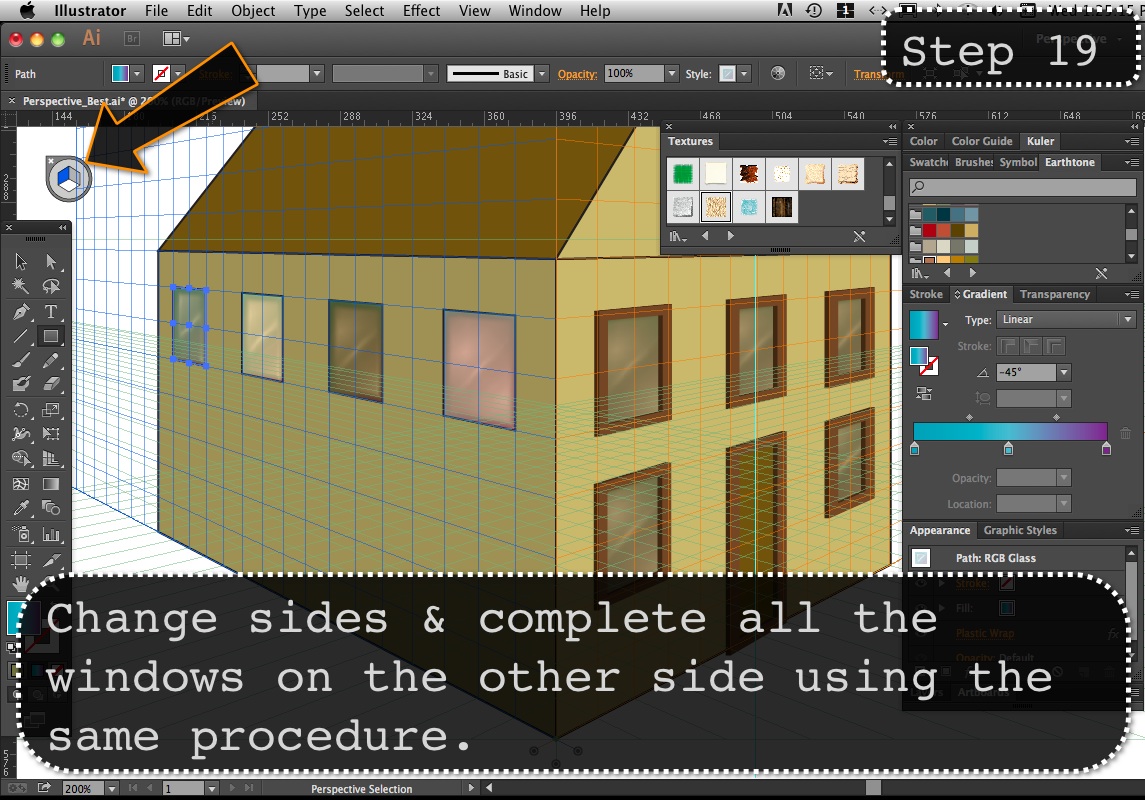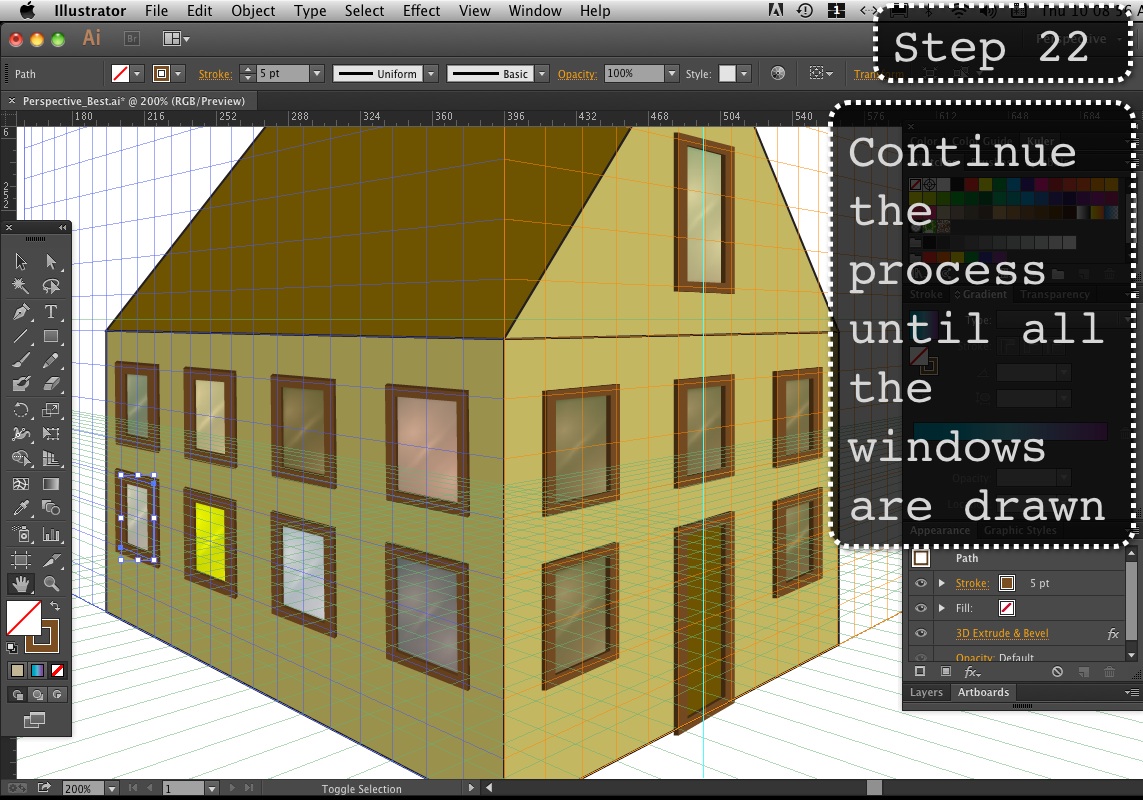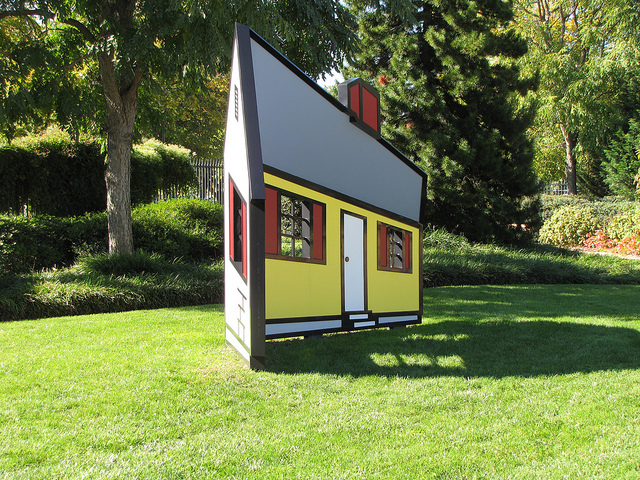Perspective is a technique used by artists and designers to show three dimensional objects on a flat surface. It was first developed during the Renaissance by artists and architects to depict buildings in a more realistic way. It is based on the understanding that as objects go back into space they appear to get smaller. To decide how much smaller the objects need to be, perspective uses lines that come together to a vanishing point, called converging lines. One point perspective is used to show the interior of a room, In the painting titled, The Last Supper, by Leonardo da Vinci, Leonardo uses 1 point perspective to show the interior of a room, all the lines going back into space come together at a single vanishing point. Here, Leonardo draws the windows in the background smaller than the windows in the foreground. Study the windows on the sides of the scene, notice how the tops of each window line up with each other and are angled downward towards a single vanishing point. Study the pattern on the ceiling and notice that lines that appear to back into space converge at the vanishing point.
Leonardo da Vinci, The Last Supper, 1498
Two Point perspective is similar to 1 point perspective except that there are two vanishing points. Two point perspective is used to show two sides of a building or structure when viewed from outside. In the picture below, artist Giotto uses 2 point perspective to show the steps that the two men are seated on. Notice how the lines on right side of the steps go to a vanishing point to the right, while the lines of the steps on the left go to the 2nd vanishing point.
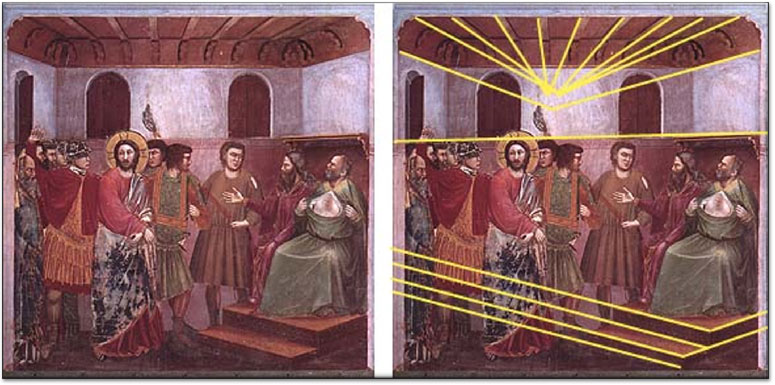
Giotto, Jesus Before the Calif, 1305
Vocabulary
Depth the illusion of real space on a flat surface
Foreshortening to portray or show (an object or view) as closer than it is or as having less depth or distance, as an effect of perspective or the angle of vision.
Perspective a system of drawing that gives the illusion of depth on a flat surface using parallel lines that converge at one or more vanishing points.
Vanishing point in perspective, an imaginary point or points on the horizon where parallel lines recede and converge.
Converge in perspective, lines coming together at the vanishing point.
Horizon a horizontal line dividing the sky & ground, or the wall & floor (interior).
Overlapping placing one object over another to give the illusion of space.
Scale the relationship of size when the same object is close, and far away.
Texture an element of design that refers to the surface, ex rough, smooth, fuzzy.
Creating a House in Perspective
Utilizing advanced tools and new features within Adobe Illustrator enable designers and artists to create 3 dimensional forms in 2 point perspective. Continuing the study of form and space and rendering a 3 dimensional object in 2 point perspective, create a house using the Perspective Tool in Illustrator. Utilize the Effects tool to render the 3 dimensional form of the window frames, exploring the adjustment tools within the Effects Tool to reflect the perspective of the house. Access the Graphic Styles Library to utilize the Textures window to create glass effects on the window panes. Click on the images below to start the Adobe Perspective Tool tutorial.
Tutorial | Basic Perspective House
.
Tutorial | Advanced Perspective House
.
Vocabulary Terms
Perspective – A technique that uses vanishing points and converging lines to show depth on a flat surface.
Plane – A flat surface.
Converging lines – Line that go back into space, coming together at a vanishing point.
Depth – the amount of space in a picture; a picture can have deep space or shallow space.
Vanishing Point – The spot on the horizon where converging lines meet.
Horizon – The line that separates the sky from the ground, or separates a table’s surface from a wall behind it.
Foreshortening – A rule in art stating that objects appear to get smaller as they go back into space.
Roy Lichtenstein
Born and raised in Manhattan from 1923 the Lichtenstein’s high school did not offer art classes but he but pursued his interests in his free time. It is often reported that he was quiet and kept to himself showing great interest in comic books and science.
Upon graduating high school he attended Ohio State university, but his undergraduate days where interrupted when he was drafted to fight in the second World War. He returned to Ohio State to complete his undergraduate as well as his masters degree and became a teacher at the university.
In the 1960s, Lichtenstein became a leading figure of the new art movement, called Pop Art alongside Andy Warhol. Like Andy, he was inspired by images from popular culture, especially comics, and he liked to spoof the mainstream advertising seen on TV in the early 1960’s.
Related Site Pages
 Architectural Planning
Architectural Planning
Study the architectural designs by Frank Lloyd Wright and
create a house using Floorplanner.com
Use the rubric below to assess your work.
